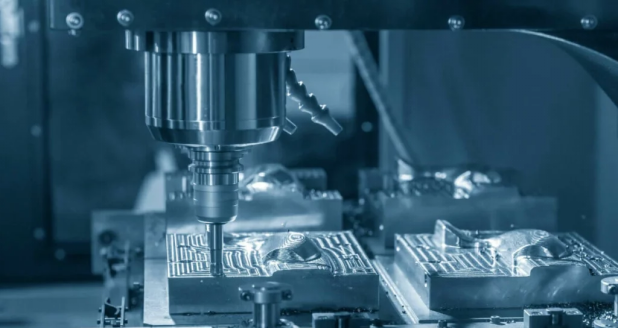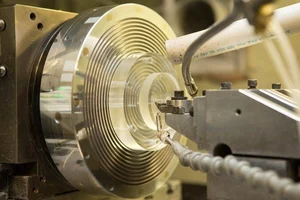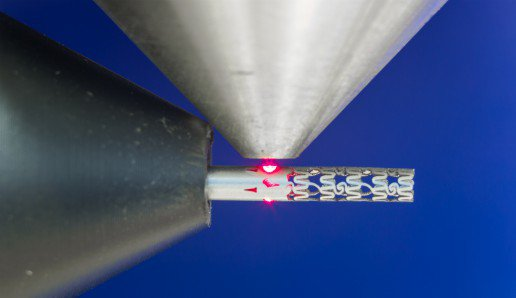Ultra Precision Machining: Processes, Performance, and Applications
 Aug 26,2025
Aug 26,2025

As you are aware, the successful implementation of any component in an application depends on its quality. And quality is the measurement of the precision a machining method can achieve. In this article, you will read some important and common manufacturing machining methods which provide ultra-precision in the dimensions of the components. So, let's understand what it means by ultra precision means:

What Is Ultra Precision Machining
When ultra precision is mentioned, it refers to the highest precision a machining method can achieve. Do you know which is the most difficult tolerance to achieve in manufacturing? Let's dive deep into it:
Definition and Key Features
You can define ultra-precision machining as the most accurate tool to achieve micro and nano-level tolerances. Because in this process, very advanced machines and highly-trained operators are used. These are some important key features you can consider:
- You can achieve an extremely tight tolerance
- Excellent surface finish
- Complex parts can be easily manufactured
- Advanced equipment and environment
How It Differs from Conventional Precision Machining
If you say what the major difference is between conventional and ultra-precision machining, it is the physical contact and type of operation. Other differences can be read in the following table:
|
Aspect |
Advanced Precision Machining |
Conventional Machining |
|
Sub-micron/nanometer (≤ 1µm) |
Micron-level (±5-50µm) |
|
|
Technology |
Laser, EDM, ultrasonic, hybrid |
CNC milling, turning, grinding |
|
Materials |
Exotics (ceramics, composites) |
Metals, plastics, standard alloys |
|
Scale |
Micro/nano (MEMS, optics) |
Macro (auto parts, molds) |
|
Cost |
High (specialised, slow) |
Lower (fast, high-volume) |
Typical Tolerance and Surface Finish Ranges
Below are the table of typical tolerance vs surface finish:
|
Process |
Tolerance (µm) |
Surface Finish (Ra, nm) |
Optical |
Semiconductor |
Medical |
|
UP Turning |
±1 - ±5 |
10 - 50 |
Lenses, mirrors |
Wafer mounts |
Implants, surgical tools |
|
Grinding |
±0.5 - ±2 |
5 - 20 |
Prisms, moulds |
Silicon wafers |
Dental prosthetics |
|
Diamond Cutting |
±0.1 - ±0.5 |
1 - 10 |
IR optics, laser components |
MEMS devices |
Micro-needles, stents |
Core Manufacturing Processes in Ultra Precision Machining
If you are worried about which method to use for your material, then this section is for you. So, let's start:
Micro-Milling and Micro-Turning
You will be amazed at how micro-level tolerance is achieved in very small components such as watch screws or microfluidics, etc.
|
Feature |
Micro-Milling |
Micro-Turning |
|
Process |
Rotating tool cuts material. |
Rotating workpiece, fixed tool cuts. |
|
Precision |
±1-5 µm |
±0.5-3 µm |
|
Tool Size |
10-500 µm end mills. |
10-200 µm diamond tools. |
|
Materials |
Metals, polymers, ceramics. |
Metals, plastics. |
|
Applications |
Microfluidic channels, watch gears. |
Watch screws, microfluidic nozzles. |
|
Surface Finish |
Ra 0.05-0.5 µm. |
Ra 0.02-0.3 µm. |
Ultra Precision Grinding and Polishing
In metallurgy, often a mirror-like surface is needed to observe grain boundaries in SEM, etc., although we cannot say it is ultra-precision machining. As mentioned earlier, ultra-precision machining (grinding and polishing) simply means the most precise tool to achieve nano-level tolerances. You will need such high tolerances in:
- Optics
- Telescopes Lenses
- Semiconductors
Accuracy vs Surface Finish in Precision Machining
Let us explain how accuracy and surface finish are directly linked. The higher accuracy refers to a higher surface finish. This highly smooth surface finish enhances the component's reliability because of reduced chances of wear and fatigue failures.
Single-Point Diamond Turning
If you are wondering about the most advanced tool in ultra-precision machining, it is “Single-Point Diamond Turning”.
The most advanced manufacturing tool you can use to achieve nano-level surface finish. This tool consists of a single-point diamond cutter to achieve nano-level accuracy and is used in applications such as infrared aspheric, spherical optics, etc.

Micro-Precision Laser Machining
You are advised to use this machining method when the application requires micro-level accuracy in tiny components. To remove the material, a laser is used in this method.

Material Selection of Ultra Precision Machining
Some of the critical factors related to material selection are discussed here:
Material Affecting Factors
Material selection is the most important factor you can rely on. That is how a material is chosen for ultra-precision machining:
Hardness and Strength
First and the most important, you should check the hardness and the strength of the material because these factors affect the machinability of a material. For instance, high-carbon steel in the quenched state is very hard and brittle, so not an appropriate choice for ultra-precision machining.
Thermal Behaviour
It is important to check thermal behaviour because machining a workpiece generates a lot of heat. If it is not driven out or accumulated within the workpiece over time during the machine, it badly affects the material's integrity.
Machinability and Work Hardening
Check whether this material is machinable like as mentioned earlier, high-carbon steel has very poor machinability. FCC metals, such as Ni, show work hardening phenomena, which impacts the machining method negatively, as a large cutting force will be required to machine that component. It reduces the tool's life.
Brittleness and Ductile Regime
If your workpiece is brittle, say cast iron, then it is going to be very hard to use ultra-precision machining. Even, it is also hard to machine by normal precision machining. (If you are going to make such a project but not sure what materials to use, contact TUOFA precision machining for a one-stop solution!) Because such materials can fail catastrophically during machining. A ductile material such as aluminium can be very easily machined because it shows plastic deformation.
Common Alloys in Ultra Precision Machining
Let us make you familiar with some common alloys used for ultra-precision manufacturing:
6061-T6 and 6063-T6
You can use both of these Al alloys depending on your application. If you are concerned about higher yield strength and hardness, choose the 6061-T6 alloy in ultra-precision machining. For higher machinability, superior surface finish and excellent corrosion resistance, use 6063-T6 alloy.
OFHC Copper (C10100/C10200)
Why do we use OFHC copper grades for ultra-precision machining? Because:
- OFHC means Oxygen-free high conductivity
- Exceptional conductivity
- higher ductility and formability
Stainless and Tool Steels
Very common material due to its excessive usage in every application because of a very good balance between strength, machinability and corrosion resistance.
Engineering Polymers
Engineering polymers are mostly used in the medical industry because of their biocompatibility and cost-effectiveness. For example, PEEK is machined via ultra-precision machining to manufacture knee implant prototypes.
Materials Choices for Custom Solutions
You need to consider these parameters before you choose a material for ultra-precision machining:
- Machinability
- Thermal conductance
- Hardness
- Strength
- And ultimately, the application
Materials Not Suited for Ultra Precision Machining
Let's briefly discuss materials which can't be used for ultra-precision machining:
Grey Cast Iron
As you know, grey cast has 2.5%-4% C, which makes it very hard and brittle, which is why it can't be used for ultra-precision machining.
Sintered Powder Metals
The primary reason why you should not choose this material for ultra-precision machining is that sintering causes shrinkage in the product, which leads to slight changes in dimensions.
Tooling and Equipment for Ultra Precision Machining
You will need very advanced tooling and equipment to achieve micron or nano-level tight tolerances. These are some common tools and equipment which are commonly used to achieve ultra-precision in the components.
CNC Lathes and Milling Machines
You can see some important differences in terms of ultra-precision machining in the following table:
|
Feature |
CNC Lathe Machine |
CNC Milling Machine |
|
Primary Motion |
Rotates workpiece (X, Z axes) |
Rotates tool (X, Y, Z axes) |
|
Precision Focus |
High radial symmetry |
High surface flatness/contouring |
|
Best For |
Cylindrical parts |
Complex 3D geometries |
|
Tool Engagement |
Single-point cutting |
Multi-point cutting |
High-Precision Cutting Tools and Coatings
In case of ultra-precision machining, you should use these tools and coatings for better response:
- Tools must have good thermal stability
- Use tools which have nanoscale edge sharpness
- For extended life, use advanced coatings like TiAlN
Fixturing and Workholding
As you know, the working speeds are high during machining, which generates high temperatures and vibrations. To tackle these issues, consider these factors:
- Fixtures must be rigid, i.e. don't deflect
- possible lowest thermal expansion
- Vibration-damping ability
- Stress-free clamping for the workpiece
Tips for Improving Quality in Ultra-Precision Machining
You may face different issues during CNC ultra-precision machining when tools are operating at fast speeds. During machining, due to different issues, different factors affect the quality of the components, but you can improve by following these rules:
How to Decline Tool Wear
It is common during CNC machining. When tools are working at fast speeds, or when the hard part of the workpiece comes under these tools, these factors lead towards tool wear and ultimately affect the quality of precision. You can control this issue by optimising machining parameters such as speed, feed rates, etc.
How to Avoid Deformation
During machining, if you have not arranged a proper environment for expansion and contraction, your workpiece will get deformed due to accumulated heat within that area. To avoid deformation, use these solutions:
- Appropriate Clamping
- Temperature Control
- Management of cutting forces
- Vibration-damping techniques
How to Maintain Tight Tolerances
A 0.01mm tight tolerance is not easy to maintain in batch production. You must be equipped with advanced machines, highly trained operators and then the software, such as CAM and finally inspection techniques.
Benefits of Ultra Precision Machining
You have been studying a lot about ultra-precision machining. These are the benefits:
Superior Accuracy and Repeatability
Ultra-precision machining ensures repeatability in the accuracy of the components in batch production. Near-perfect machining of components is the guarantee of enhanced life of components and successful applications.
Good for Complex Shapes Parts
You can make components of complex shapes easily using ultra-precision machining. For instance, combustion chambers in an aircraft can be easily manufactured using ultra-precision machining.
Surface Integrity and Performance
Superior surface finish ensures surface integrity and ultimately increases the performance of the respective components. You will be able to prevent wear, fatigue failures.
Applications of Ultra Precision Machining
Let us provide you with some real-life applications of ultra-precision machining in this section:
Aerospace and Aviation Components
Do you know which industry has set the most difficult safety standards to meet? Well, it is the Aerospace industry. You can't make components with 0.005mm or 0.001mm tolerances until you use ultra-precision machining. These are some common components:
- Turbine Blades
- Fuel Injectors
- Combustion Chambers

Optics and Photonics Systems
Let us provide you few of the applications of ultra-precision machining in optics and photonics systems:
- Optical Waveguides
- Freeform Optics
- Micro-Array Lenses
- Polymer-based Optical Prisms and Mirrors
It is the most common industry in terms of ultra-precision machining.
Medical Devices and Surgical Instruments
Ultra-precision machining is widely used in the medical industry, for instsnce:
- Orthopaedic Implants, including hip and knee replacements
- Dental tools
- Prosthetics
- Diagnostic equipment
Precision Machining and Custom Solutions
Let's see precision machining and custom solutions:
Co-Design for DFM
Sometimes, during manufacturing, it becomes urgent to make some changes in the design to make the component more functional or cost-effective for machining. This alteration in the design of the component during manufacturing is called Co-Design for DFM.
Custom CNC Machining Process
It means you have the freedom to choose a specific operation or multiple at a time, depending on production efficiency against the functional requirements.
These machining processes include:
- Rough milling or turning
- Semi-finishing
- Finish machining
- Polishing etc.
Further reasons can be material, required surface finish or precision.
Custom Fixturing and Datum
You should know that in ultra-precision machining, even the stresses induced by the clamping fixtures affect the micro-level tolerance controls. So, the fixtures and datums are custom-designed in a way that they do not insert stresses within the workpiece during the machining.
In-Process Metrology
The days have gone when you used to inspect the components after completion of the manufacturing processes. Now, advanced manufacturing systems come with an in-process inspection feature, this feature is also called in-process metrology. Smart probes or lasers keep detecting any errors in the workpiece during the machining process.
Prototype-to-Production Path
Do you think it is a simple procedure to move from prototype to production of multiple components? Well, it is not so simple. A unique design of a prototype can lead towards custom designing of fixtures, datums, clampings, toolpaths optimisation, etc.
How to Choose the Right Ultra Precision Machining Partner
Let us tell you that, you cannot perform ultra-precision machining all alone. You need a partner who assists you in tackling challenges during ultra-precision machining.
Proven Material and Part Experience
You should analyse these things while selecting a partner for ultra-precision machining:
- Track record across such materials
- Knowledge about material-specific issues
- Experience with similar components
Quality Systems and Certifications
- Check for certifications (ISO 9001, AS9100, ISO 1345) based on your application
- Calibration records for tools and equipment
- Commitment to environmental controls
Prototype-to-Production Capability
How can you find the best UPM supplier? If he can seamlessly transition from R&D to production, he is the best UPM supplier. This capability involves:
- Expert in prototyping
- Flexible fixturing and machining
- Process optimisation skills
- Proven long-term production stability
Conclusion
Ultra-precision machining is the utmost requirement if your workpiece is going to be used for aerospace or optics applications. You will need very advanced tools and equipment to achieve micro- and nano-level tolerances. Are you worried about where you should go for ultra-precision machining? Well, TUOFA is here for you. We are equipped with the most advanced tools, equipment and expert machine operators. We offer you micro- and nano-level precision in dimensions at very cost-effective prices and short delivery terms.
FAQs on Ultra Precision Machining
What is ultra-precision grinding?
The process, which is used to achieve micro- and nano-level tolerance in surface finish, is called ultra-precision grinding.
What is the most precise machining method?
- CNC machining
- Photolithography
Is ultra-precision machining suitable for mass production?
Not mostly because ultra-precision is a relatively slower process, so long time-cycles, which are not suitable for mass production.
How does ultra-precision machining achieve such high accuracy?
That is how ultra-precision machining achieves such high accuracy:
- Design of tools
- Coatings on the tools
- Environmental and process control, etc.
 Tel/WeChat:
Tel/WeChat:  Email:
Email: 
 Home
Home
 Text Milling: CNC Engraving for Letters, Numbers, Logos in One-Stop
Text Milling: CNC Engraving for Letters, Numbers, Logos in One-Stop 







